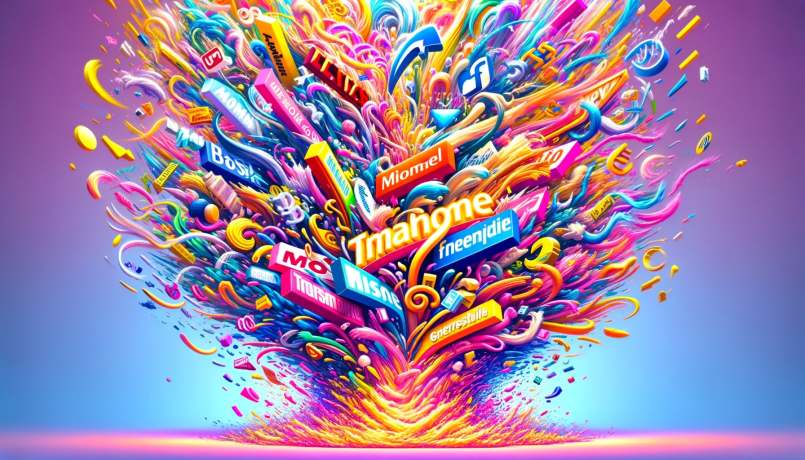
Explore the fascinating yet challenging world of trademark law, where brands fight to retain their distinctiveness against the tide of becoming generic.
by Zach Javdan
December 14, 2023
Understanding the Phenomenon of Genericide
When does a trademark stop being a trademark? The curious phenomenon known as “genericide” showcases the occasionally fleeting nature of trademark protection. Genericide occurs when a once distinctive, famous trademark becomes the commonly used generic name for a type of product. Essentially the mark transforms into a victim of its own mainstream success and popularity.
And companies often devote considerable legal and marketing resources towards trying to avoid having their trademarks meet this unfortunate fate. After all, unlike patents or copyrights, the legal protection afforded a trademark largely hinges on it remaining distinctive in the minds of consumers.
How the Genericide Process Unfolds
If the public starts commonly associating a trademark like “Kleenex” with tissues in general rather than a specific brand, genericide looms. According to trademark law, marks are classified along a spectrum spanning from inherently distinctive coined terms on one end to widely used generic product names on the other. Crucially, generic terms receive no legal protection or recourse against infringement.
Some of the most famous examples highlighting this risk come from the early-to-mid 20th century. “Aspirin,” once Bayer’s proprietary painkiller medication, became genericized for the drug due in part to Bayer losing exclusive control of the mark in the U.S. after World War I. The term “escalator,” originally associated solely with Otis Elevator Company’s moving staircase product, met a similar fate genericizing into common usage.
And the rise of “Kleenex” as a household name for facial tissues remains a cautionary tale of a mark that exists in limbo even today, neither fully generic nor exclusively distinctive. Of course, these early formerly protected marks have company among many other now-generic terms like cellophane, linoleum, and kerosene.
Ongoing Efforts Combating Genericide
Modern brands invest major efforts to avoid genericide given past cautionary tales, though complete success remains elusive. Google strongly discourages using “google” as a verb for internet searching in favor of the generic term “search online.” Yet widespread colloquial use of “googling” persists.
Meanwhile, Band-Aid hyper vigilantly polices usage of their adhesive bandage trademark in product names, advertisements, and public-facing content referencing similar offerings. Only time will tell whether these dedicated attempts to halt drift towards becoming generic ultimately succeed long-term.
And the lengthy list of genericized trademarks lost to history proves no company remains fully immune to this persistent threat. Alongside aspirin and escalator, marks like cellophane, thermos, laundromat, and trampoline were all once legally protected before losing exclusive rights.
Recent marketing research even flagged modern trademarks commonly used generically that remain at high risk moving forward like Photoshop, Band-Aid itself, and Rollerblade. Certainly instances of genericide exist across industry verticals from consumer products to software to recreational equipment.
The Difficulty of Reversing Genericide
Vigilance constitutes only half the battle, as companies desperately working to avoid genericide fully understand. Past examples painfully underscore why proactive trademark monitoring and swift legal policing represent such critical priorities. But could even air tight vigilance realistically save prominent marks from one day going the way of aspirin and escalator?
History indicates reversing the genericization of a trademark, once the process reaches a certain point, proves exceptionally difficult compared to preventing it outright. Just look at the prolonged saga Xerox has faced trying to protect its famous photocopying brand name for decades. Despite dedicating tremendous financial and legal resources towards educating consumers and enforcing proper trademark usage since the 1970s, “xerox” still gets widely used colloquially as a verb synonymous with “photocopy.”
Critics suggest after a certain saturation point in public perception, combating source association becomes unrealistic. Perhaps genericide simply highlights the occasionally precarious high-wire act protecting strong trademarks long-term truly requires. Even iconic brands remain at the mercy of gradual shifting consumer language and habits.
Key Takeaways for Brand Managers
Given digesting high-profile examples of genericide in action, the importance of early trademark monitoring and continuous policing hardly warrants underscoring. Markets continuously evolve, language organically changes, and consumer habits gradually shift.
So a trademark seemingly distinctive today risks drifting towards generic territory in the future. While few marks will ever achieve the mainstream cultural ubiquity truly making genericide a threat, understanding the underlying risks and dynamics remains imperative for marketing and legal teams alike.
After all, protecting a trademark requires proactively anticipating how public usage might incrementally but powerfully transform a distinctive brand identifier into a commonly used generic name. Because as various genericized former trademarks have shown over the decades, even savvy marketing triumphs and strongly branded juggernauts always remain at risk of shifting from trademark to generic term moving forward.
Also See:
Frequently Asked Questions about Genericide:
- 1. What triggers genericide? Extensive generic public use.
- 2. Can popularity cause genericide? Yes, if widespread.
- 3. Industries immune to genericide? None.
- 4. Can genericide be contested in court? Yes, difficultly.
- 5. Do all countries have genericide laws? Most do, details vary.
- 6. Is genericide reversible? Rarely.
- 7. Example of genericized brand? Escalator.
- 8. Can new brand genericize fast? Usually takes time.
- 9. Do trademarks prevent genericide? Try to, not always.
- 10. How to combat genericide? Strategic marketing, education.
- 11. Does genericide affect brand value? Yes, typically reduces.
- 12. Famous brands more prone to genericide? Yes, due to recognition.
- 13. Can awareness prevent genericide? Increased can help.
- 14. Is genericide recent? No, decades old.
- 15. Any name potentially generic? Yes, with enough use.
- 16. Media’s genericide role? Significant, through usage.
- 17. Online behavior impact? Rapid spread accelerates.
- 18. Does genericide apply to service marks? Yes.
- 19. Are new brands safe? Not necessarily.
- 20. Can slogan suffer genericide? Yes, if common phrase.
- 21. Do legal protections vanish after genericide? Trademark ones typically.
- 22. Can generic term be trademarked again? Rare, requires rebranding.
- 23. Does genericide impact consumer perception? Yes, can change it.
- 24. Can global brand fight genericide effectively? Yes, but requires effort.
- 25. Are all industries equally affected? Some more prone.
- 26. Can marketing reverse genericide? Can help, not guaranteed.
- 27. Is genericide a failure of trademark law? More a limitation.
- 28. Do renewals protect against genericide? Not directly, usage key.
- 29. Public opinion’s influence? Major factor.
- 30. Can logo undergo genericide? Less common, possible with iconic.
- 31. Does trademark age influence risk? Older may face higher.
- 32. Can generic term regain trademark status? Rare, but possible with usage shift.
- 33. How does genericide affect global brands? Weakens protection.
- 34. Are technology terms more susceptible? Yes, due to evolution.
- 35. Can litigation reverse genericide? Challenging but can help.
- 36. Does consumer education help prevent genericide? Yes, crucial for identity.
- 37. Any product categories immune? No, all potential.
- 38. Can social media trigger genericide? Yes, contributes.
- 39. Legal view of genericide? Balancing act of use.
- 40. First step fighting genericide? Actively manage usage.
- 41. Can rebranding fully mitigate genericide? Helps, doesn’t erase.
- 42. Do leaders have greater risk? Yes, due to recognition.
- 43. How can new brands avoid genericide? Reinforce distinct usage.
- 44. Are service marks at risk too? Yes, same principles.
- 45. Can monitoring prevent genericide? Key for early response.
- 46. Does genericide impact all languages equally? No, varies by language.
- 47. Can company inaction lead to genericide? Yes, contributes.
- 48. Are generic terms always legal to use? Yes, once genericized.
- 49. How does globalization affect genericide? Accelerates across markets.
- 50. Can a trademark become generic in one country but not another? Yes, depends on usage.
- 51. Is genericide easier to prove now? Yes, digital evidence helps.
- 52. Industry trend changes’ impact? Can hasten or slow process.
- 53. Can one lawsuit determine generic status? Can set precedent.
- 54. Does product type influence speed? Everyday may face quicker.
- 55. Are descriptive marks more vulnerable? Yes, closer to generic.
- 56. Can trade laws affect genericide? Yes, in global products.
- 57. Marketing impact? Effective strategies slow/prevent.
- 58. Does genericide affect online/offline differently? Principles similar, but spread faster online.
- 59. Can behavior shifts reverse genericide? Unlikely, but can impact.
- 60. Preventative measures against genericide? Yes, proactive management.














